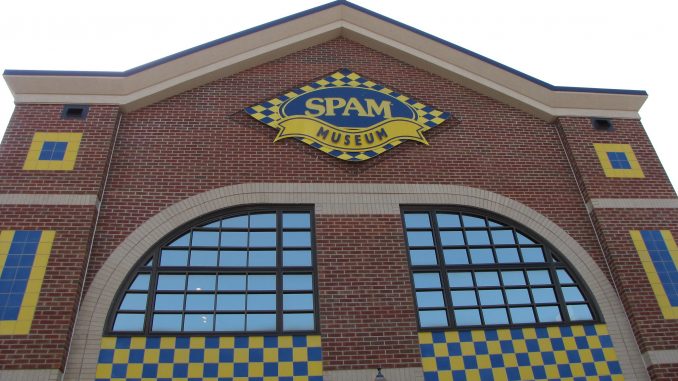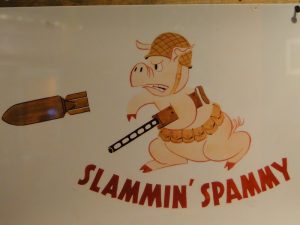
Austin, Minnesota is home to a special museum dedicated to one particular brand of canned precooked meat. The museum’s first home at Austin’s Oak Park Mall opened as the Hormel Foods First Century Museum in 1991 to celebrate the company’s 100th anniversary. The small museum was a surprise hit with the public but it just so happened that visitors were only really interested in one product in Hormel’s portfolio.
Quickly rebranded as The Spam Museum, the odd corporate attraction shares the history of the Hormel company and the origin of Spam, but also features some really interesting information about Spam and its place in world history and culture.
In September 2001 the now largely Spam-focused museum opened with 16,500 square feet of attractions that included games, historical displays, family activities, and a theatre. In September 2014, the museum closed and moved to its current downtown location.
The downtown Austin museum is approximately 14,000 square feet and includes seven distinct main galleries. The most intriguing of them is a World War II-themed exhibit that highlights the important role Spam played as a staple for American troops. The canned cooked ham could be shipped to the fighting boys, and its long shelf life meant they were getting some much needed nutrition. In a time where many foods in the United States were being rationed and supplies were scarce around the world, Spam helped with the war effort in its own little way.
Europeans, with the exception of the Brits, didn’t care for Spam but nearly 100 million pounds were consumed by the Allied forces. For those stationed on the Pacific front something completely different happened and Spam became a huge success. It’s still wildly popular in the region.

The Spam museum is surprisingly fun and charming in a way that overloaded corporate branding rarely succeeds. It highlights the canned meat but doesn’t fail to show both sides of the love-hate relationship people have with the product. The gift shop is also one of the few places authentic Spam related merchandise may be purchased in a completely non-ironic fashion.
Spam Museum Facts
- The current museum opened on 22 April 2016 at 101 3rd Ave NE, Austin, Minnesota.
- The theatre used to show a short film entitled “SPAM: A Love Story”.
- The Spam Shop offers hundreds of Spam-branded items and gifts.
- Since it first opened in 1991 there have been three Spam Museums.
- Volunteer guides at the museum are known as Spambassadors.
- Spam samples on little toothpicks are knows as Spamples.
- The Spam Museum is a featured stop in the Dan Gutman book series Genius Files.
Spam Facts
- Hormel produces 44,000 cans of Spam every hour.
- Spam is made of pork shoulder, ham, salt, water, sugar, potato starch, and sodium nitrate.
- The states of Hawaii consumes approximately 7 million cans of Spam per year.
- Spam officially launched on July 5, 1937.
- Sale of Spam increases during economic recessions.
- A Hormel vice president’s brother, Ken Daigneau, won $100 in a contest to name the canned meat but no one actually knows what it means, or if it means anything at all.
- The eight-billionth can was sold in 2012.
- Spam is sold in a total of 44 countries.
- It’s a luxury item in parts of Korea and frequently given as a holiday gift.
- Spam is cooked in the can. The uncooked Spam is packed in the can and sent down a heated conveyer belt.
- There are 15 different varieties of Spam.


